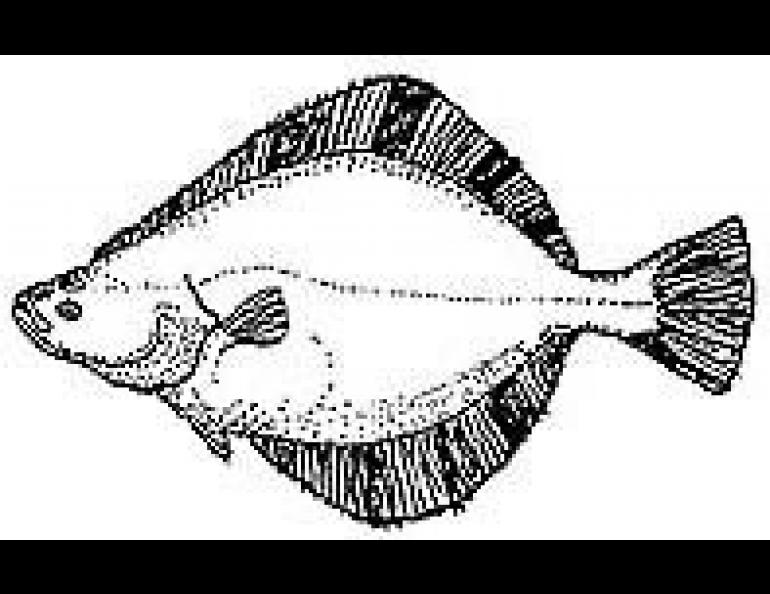
Solely for the Halibut
Going by catch statistics, it's possible to imagine the sea bottom off Alaska was paved with flatfish before commercial fisheries came to our coasts. From giant halibut and Greenland turbot to little rex and Dover soles, we have a wide selection and great numbers of these peculiar creatures. It's difficult to tell newly hatched flatfish apart--or from the larval forms of ordinary fish. At first, they don't look flat. When they emerge from eggs they swim upright, with eyes on either side of their heads, just like a newly hatched salmon or cod. At this stage, larval flatfish are planktonic, drifting where currents take them. They are nearly colorless and quite transparent, which probably helps them to avoid predators.
The young fish are first sustained by yolk sacs, a leftover high-energy portion of their eggs. Some time after they start feeding, a strange transformation begins. One eye migrates across the top of the fish's skull to lie next to the eye on the other side. Skull bones, nerves, and muscles all alter to suit the new form. The side with the eyes begins to develop color, while the blind side becomes the pale underside. Beginning to take on adult form, young flatfish settle to the bottom and begin to live as their parents did.
For halibut, the transformation takes some months. Halibut spawning peaks in December and January, and the young fish complete their transformation and settle down into inshore nursery areas from June to September. The change to flatfish form also takes a toll. Based on studies of artificially reared Atlantic halibut and starry flounders, researchers think otherwise healthy young fish suffer extremely high mortalities during the transformation.
Which eye does the moving is not a random matter. The flatfish found in Alaska waters are in one of two families, and which side they lie on is a good indication of their family. Halibut and most other Alaska flatfish swim rightside up; they are in the right-eye flounder family, or Pleuronectidae. The Bothidae family contains the left-eye flatfish--usually. The starry flounder belongs to the right-eye family, but along Alaska's coasts about 70 percent of them are left-eyed. Those caught off California have been about evenly divided between left- and right-eyed fish, and off Japan all of them are truly wrongheaded, with 100 percent left-eyed.
It may not seem easy to tell a right-eyed flatfish from a left-eyed one, but it's actually fairly simple. Fishes have two paired fins, the pectoral fins near their gills and the pelvic fins near where their tails and bellies meet. The pelvic Fins on flatfish do not migrate the way the eyes do, so they appear on the original lower edge of the fish. Thus, if a flatfish is held on edge with its pelvic fins pointing down, it is a left-eyed fish if the head is facing left and the colored side and eyes are also on the left. (This is easier to do than describe--at least, it is easier to do with a fairly small fish. A full-grown halibut is a little harder to hold.)
However odd the end result may look to human eyes, and however many larval fish may die in attempting it, the transformation from symmetrical upright swimmer to bottom-hugging flatfish seems to have paid off in the evolutionary sweepstakes. It's our good fortune that so many of these abundant animals are also good food for humans.





